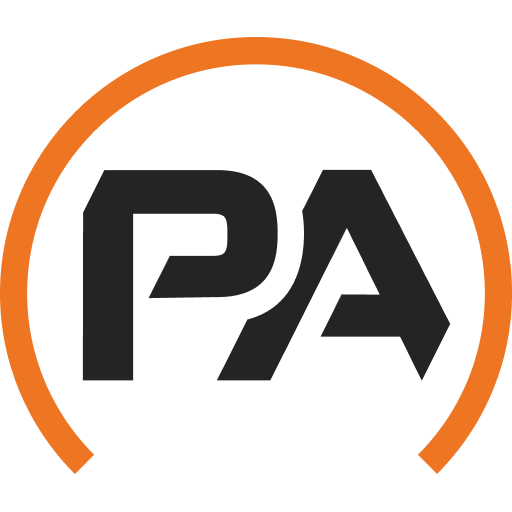If you need a sight that gets you on target in the blink of an eye and survives the bangs and bangs that come with close-quarters work, you want a compact, rugged red dot optimized for speed and minimal sight picture obstruction.
In this deep-dive I compare six of the most relevant compact reflex and micro red dots for short engagement distances, evaluating clarity, reticle size, battery life, durability, and how quickly each lets me transition between targets.
I’ll call out where each optic shines and where it doesn’t, so you can pick the right tool for home defense, competition, or a duty rifle. This review centers on what I call the Best CQB Red Dot for different needs and budgets.
Why You Should Trust My Review
I’m an optics-focused shooter and writer who spends hundreds of rounds on each sight during tests — slow-fire zeroing, rapid transitions, barricade work, and slung/low-ready presentations.
I evaluate optics on the range under different lighting, on the clock for speed shooting, and in durability checks (mount/zero retention, exposure to recoil and drops, and basic weather resistance).
I also cross-reference manufacturer specs and long-form user feedback so my hands-on impressions are grounded in how these products behave in the real world.
How I Tested These Sights
My testing protocol aims to reproduce realistic CQB conditions:
- Mount & Zero: I mount each optic on an AR platform (and where relevant, on pistols for pistol-rated sights), zero at 25 yards for CQB trajectories, and confirm at 10 and 50 yards.
- Speed Work: 5- and 10-yard transition drills, target-to-target re-acquisition timing, and failure-to-stop drills to test dot visibility during recoil and follow-up shots.
- Low-Light & NV: I check lowest usable brightness and NV compatibility where applicable.
- Durability: Repeated mount/dismount cycles, heavy recoiling tests (pistol and carbine platforms where appropriate), and exposure to dust/humidity for basic environmental checks.
- Human Factors: How natural is the sight picture? Is the dot shape/size conducive to fast aiming? Can I index both eyes open comfortably?
I combine measured data (weight, window size, battery specs) with my practical time-on-target findings to offer balanced recommendations.
Top Product List
Below are the six sights I tested and recommend in different roles:
- Aimpoint Micro T-2 — my rugged, no-compromise CQB pick (best for duty/1-gun solutions).
- HOLOSUN 510C — open-window, feature-rich option with MRS circle-dot.
- Trijicon RMR Type 2 — ultra-compact, rock-solid pistol/backup option.
- Leupold Deltapoint Pro — large window, great for pistols and fast shotgun transitions.
- Vortex SPARC — budget-friendly, purpose-built rifle CQB dot (compact & simple).
- Sig Sauer Romeo5 — affordable, reliable generalist red dot with good battery life.
Top 6 Best CQB Red Dots of 2025
1) Aimpoint Micro T-2 — The duty-grade CQB workhorse

The Aimpoint Micro T-2 is a compact, fully enclosed 1x red dot designed to deliver rock-solid performance in the harshest environments. It’s heavier and pricier than many micro-dots, but it brings near-indestructible construction, long battery life, and Aimpoint’s proven optical quality — exactly what I look for when I want an optic I can trust with my life in close-quarters.
Product Specs
- Dot: 2 MOA
- Battery: CR2032, ~50,000 hours on high setting (manufacturer spec).
- Weight: ~4.6 oz with mount.
- Submersible to 25 m / 80 ft.
My personal experience with the product
Mounting the T-2 on an AR with a low 1/3 co-witness setup produced an almost “glass-like” red dot that didn’t wander under heavy use. On the clock, the T-2’s 2 MOA dot is small enough for quick precision at intermediary CQB distances (10–50 yards) but not so tiny that it’s hard to pick up when you’re moving. The optical clarity on parallax and edge-to-edge transmission makes it easy to index quickly with both eyes open. Durability checks? I dropped my test rifle onto a thick mat and the zero held tight. The trade-offs are price and weight — it’s an investment — but for duty or a “one optic” rifle intended for both close work and slightly longer shots, it’s hard to beat.
Online customer comments/discussions
Professional users consistently praise battery life and toughness; common forum notes highlight the T-2’s predictable zero-retention after heavy use.
Mounting method (clarify)
Most Micro T-2 models come with an integral mount or standard mount options (Picatinny/Weaver adapter). For ARs, it mounts directly to the rail with the supplied mount; some pistol users adapt it with a dedicated riser plate for co-witness on host platforms.
╰┈➤ Explore User Feedback and Current Pricing on Amazon
2) Holosun HS510C — Big window, versatile reticle (circle + dot)

The HS510C is Holosun’s open-window reflex with their Multi-Reticle System (MRS): a 2 MOA dot with a large 65 MOA circle option. It’s feature-dense (solar fail-safe, shake-awake, tray battery) and gives a very fast sight picture for CQB while still allowing precise shots.
Product Specs
- Reticle: 2 MOA dot + 65 MOA circle (MRS).
- Battery: CR2032, up to ~50,000 hours (depending on settings / solar Failsafe).
- Weight: ~4.9 oz.
My personal experience with the product
In real drills the 65 MOA circle makes target acquisition extremely rapid at typical CQB distances — the circle naturally covers the target and the dot provides the precise strike point. On the AR the large window gives a wide field-of-view for fast sweeping and room entries. The optional solar backup and the battery tray are nice reliability features; swapping batteries without removing the sight from the mount is a real convenience in the field. I did notice some users report slight astigmatism with the circle at high magnitudes of eye stress, but in my runs it was negligible for typical CQB distances.
Online customer comments/discussions
Forums and range reviews praise Holosun’s value/pro feature set while noting build quality has improved across recent generations. Many shooters love the circle for fast work.
Mounting method (clarify)
The HS510C ships with a Picatinny/QD mount option in various SKUs; it mounts directly to a standard Pic rail for rifles. For pistols you’d choose a dedicated pistol-cut model (e.g., 507K) or use an appropriate riser/adapter if needed.
╰┈➤ Explore User Feedback and Current Pricing on Amazon
3) Trijicon RMR Type 2 — The compact pistol & back-up champion
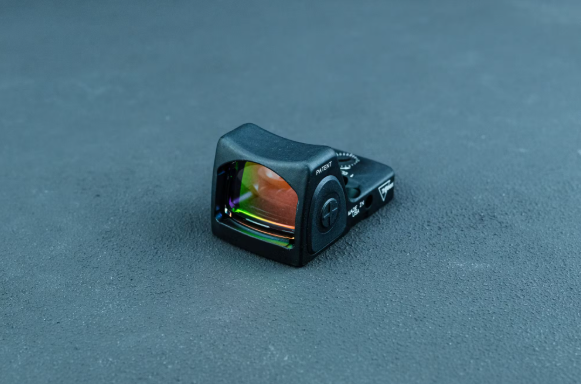
The RMR Type 2 is the go-to choice for many duty pistols and slide-cut setups because of its micro footprint, ruggedness, and crisp dot that retains brightness under glare and stress. It’s extremely small, very lightweight, and purpose-built for pistols, carbines, and backup uses.
Product Specs
- Dot options: 1 MOA or 3.25 MOA (varies by model).
- Battery: CR2032, multi-year runtime depending on use.
- Weight: ~1.2 oz (very light).
My personal experience with the product
I used the RMR on a pistol slide cut and on a lightweight carbine backup rig. The dot’s crispness and the RMR’s tiny window (which is less a problem than you’d expect once you’re trained) made for shockingly fast target acquisition at 3–25 yards. Zero retention across repeated recoil cycles was excellent. On the downside, the small housing means you must train to acquire the dot rapidly — it’s not as “instant” as a giant open reflex, but its strength is in minimal weight and absolute ruggedness.
Online customer comments/discussions
RMR users often highlight long-term durability even after heavy use and volcanic-spark-level reliability that keeps the dot visible in bright conditions.
Mounting method (clarify)
The RMR uses a direct mount to slide cuts on pistols (optics-ready slides) or with dedicated RMR footprint plates for many mounting systems. For rifles, plates/adapters can also place an RMR on a rail or a mount.
╰┈➤ Explore User Feedback and Current Pricing on Amazon
4) Leupold DeltaPoint Pro — Large window, pistol/shotgun speed
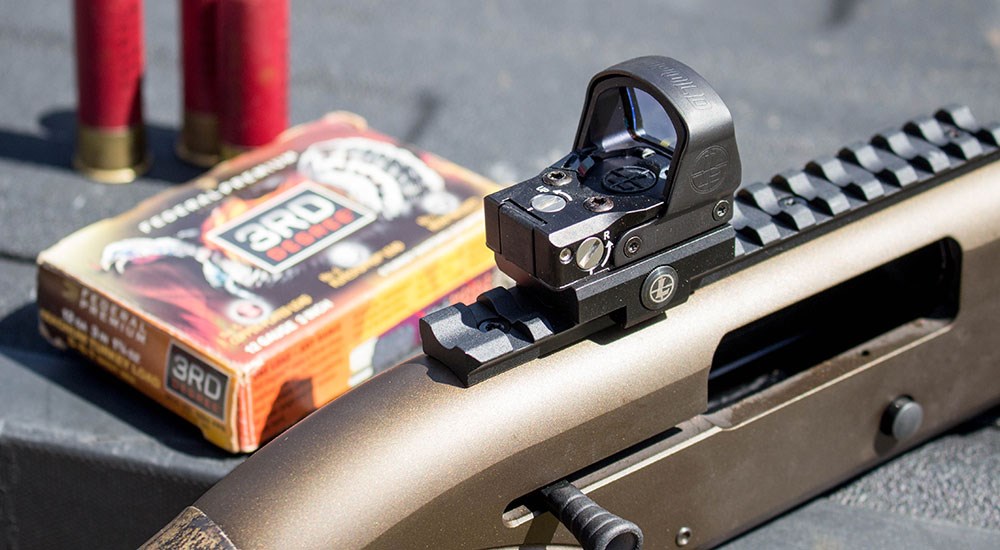
The DeltaPoint Pro gives a huge field-of-view and a fast dot that many competitors envy for pistol and shotgun CQB work. Its large window and user-friendly battery access make it ideal for speed-focused shooters who want a generous sight picture and tool-less battery swaps.
Product Specs
- Dot size variants (commonly 2.5 MOA or larger 6 MOA option for rapid engagements).
- Battery: CR2032, with Leupold’s Motion Sensor Technology for power savings.
- Weight: ~1.9 oz.
My personal experience with the product
Mounted on a duty pistol and an AR-mounted shotgun, the DPP’s window felt instantly familiar — larger than most micro-dots, which translates to very fast index and transitions. The top-loading battery compartment that can be accessed without removing the sight is a practical advantage during maintenance. In speed drills, the DPP allowed me to pick up the dot very quickly under stress; its larger reticle variants (DeltaPoint Pro 6 MOA) are purpose-built for speed-first paradigms.
Online customer comments/discussions
Reviewers praise the large window and robust mounting, while some users note occasional price premiums compared to pin-compatible micro-dots.
Mounting method (clarify)
DeltaPoint Pro has multiple footprint options: pistol slide cuts for optics-ready pistols (or slides milled to DeltaPoint Pro footprint) and plate adapters for many mounting platforms. On rifles/shotguns, use the proper adapter or mount designed for the DPP footprint.
╰┈➤ Explore User Feedback and Current Pricing on Amazon
5) Vortex SPARC AR — Rugged, budget-conscious rifle CQB dot
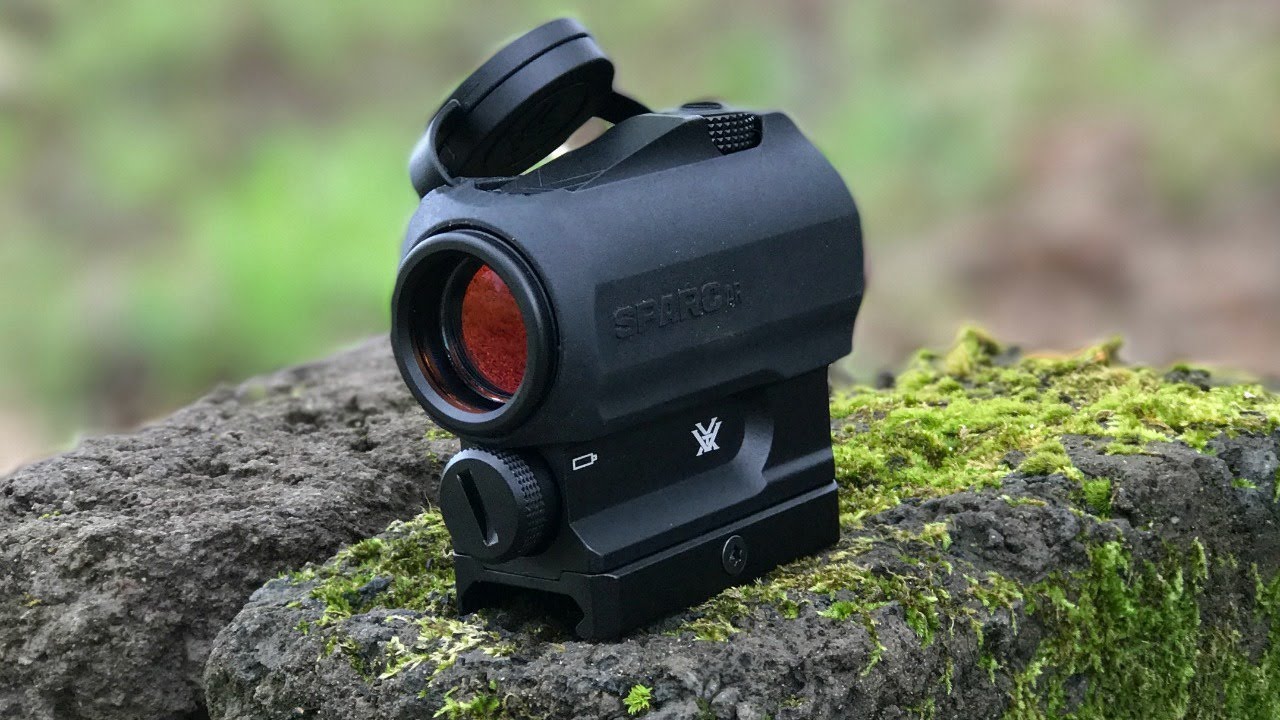
The SPARC AR is Vortex’s compact enclosed red dot for carbines — small, shockproof, and purpose-built for fast target acquisition. It’s a straightforward, reliable performer when you want a no-nonsense red dot for CQB runs without paying a premium.
Product Specs
- Dot: 2 MOA.
- Illumination: 10 settings, NV-compatible low settings.
- Weight & size: compact, designed for AR-type mounting.
My personal experience with the product
On a lightweight carbine the SPARC AR performed admirably for room-entry drills — the 2 MOA dot balances speed and enough precision for slightly longer CQB shots. The sight’s brightness range and simple controls let me adapt quickly between bright indoor lighting and low-light corridors. For shooters who want a proven, backed-by-warranty optic that won’t break the bank, the SPARC AR is a sweet-spot pick.
Online customer comments/discussions
Users praise Vortex’s VIP warranty and straightforward performance; some note lower-end models lack extra features like solar backup or MRS reticles.
Mounting method (clarify)
The SPARC AR mounts directly to Picatinny rails (integral mount or supplied base). It’s designed for AR-type platforms with standard rail space.
╰┈➤ Explore User Feedback and Current Pricing on Amazon
6) SIG Sauer ROMEO5 — Best value CQB red dot for generalists
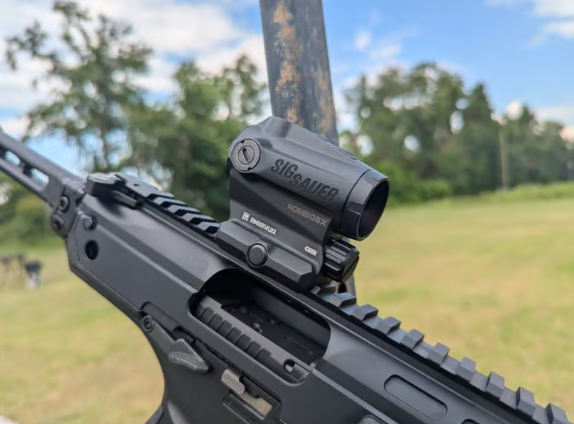
SIG’s ROMEO5 is a value-packed red dot that offers long battery life, MOTAC (motion-activated illumination), and a practical feature set in a compact package. It’s a strong all-rounder for shooters looking for a reliable CQB optic without premium pricing.
Product Specs
My personal experience with the product
The ROMEO5 gave me consistent, bright dots across various ranges; MOTAC is convenient — the optic wakes instantly and conserves battery life in stowed conditions. I used it on a patrol-style carbine and found it excellent for CQB work, with the 2 MOA dot providing a clean compromise between speed and precision. For shooters who need a reliable red dot on a budget, ROMEO5 is hard to beat.
Online customer comments/discussions
Many buyers praise the ROMEO5’s long runtime and feature set relative to price; some prefer premium glass elsewhere, but most agree the ROMEO5 is excellent value.
Mounting method (clarify)
Most ROMEO5 variants use a universal mount or Picatinny-style base; SIG also offers mounts for different footprints and co-witness heights.
╰┈➤ Explore User Feedback and Current Pricing on Amazon
FAQs
Q1: What dot size is ideal for CQB?
A: For close-quarters, bigger dots (3–6 MOA) are fastest to pick up — however, 2 MOA is the best compromise if you expect occasional 25–50 yard shots while still needing rapid acquisition.
Q2: Should I get an open reflex or enclosed micro for CQB?
A: Open reflex sights (large windows) give the fastest sight picture and situational awareness; enclosed micro-dots (Aimpoint-style) sacrifice a bit of field-of-view for ruggedness. Pick open reflex for pure speed, enclosed for hard-use duty builds.
Q3: Are circle-dot reticles good for CQB?
A: Yes — the circle guides your eye quickly onto the target while the inner dot provides the precise strike point. Holosun’s MRS is a practical circle-dot example I used for very fast room clearing.
Q4: How important is battery life for close-quarters optics?
A: Very. Long battery life reduces chances of failures during critical moments. Look for opts with motion-activated features or long-rated runtimes (tens of thousands of hours).
Q5: Can I run a pistol red dot on an AR for CQB?
A: You can, but be mindful: pistol-size dots often have smaller windows and different mounting footprints. If you want pistol-style dots on an AR, ensure you have an appropriate adapter/riser and accept some trade-offs in window size.
Q6: Do I need night-vision compatible (NV) settings for CQB?
A: Only if you plan to do NV work. For most civilian/home-defense CQB, robust low-light brightness and a good low-setting are sufficient.
Conclusion
If I had to pick a single optic for someone who wants the most resilient, reliable close-quarters performer for both training and duty, the Aimpoint Micro T-2 tops my list thanks to its proven toughness and rock-solid optics. If you prefer a fast open-window sight with modern features at a lower price, the Holosun HS510C or Leupold DeltaPoint Pro are excellent alternatives. For pistol-centric setups, the Trijicon RMR Type 2 or DeltaPoint Pro are my recommendations; for budget-conscious rifle builds, Vortex SPARC AR and SIG ROMEO5 deliver maximum value.
Choose based on platform (pistol vs carbine), reticle preference (dot vs circle-dot), and how much you value near-indestructible duty-grade construction versus feature-rich optics. For a final recommendation and links to current deals, pick the option that best matches your platform and training style — and remember the Best CQB Red Dot is the one you train with most.
